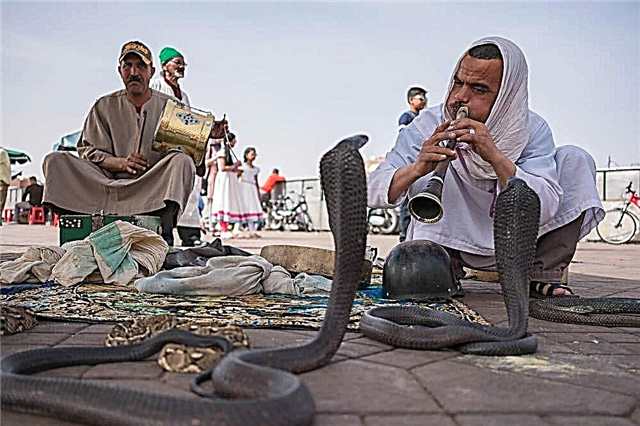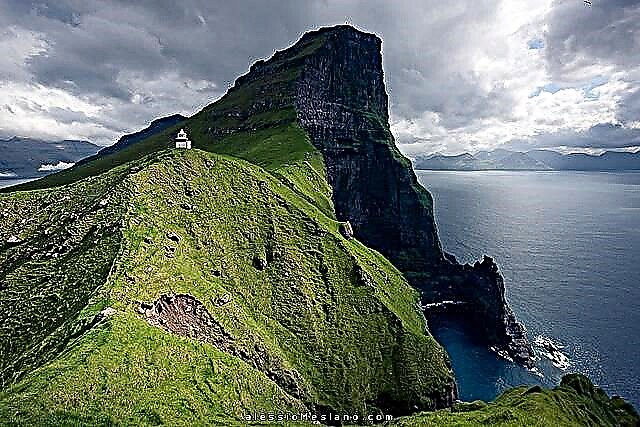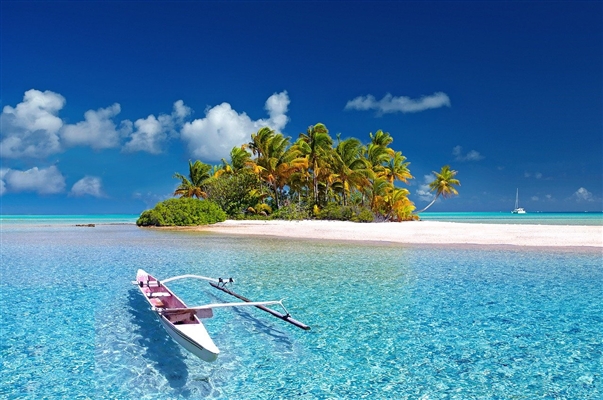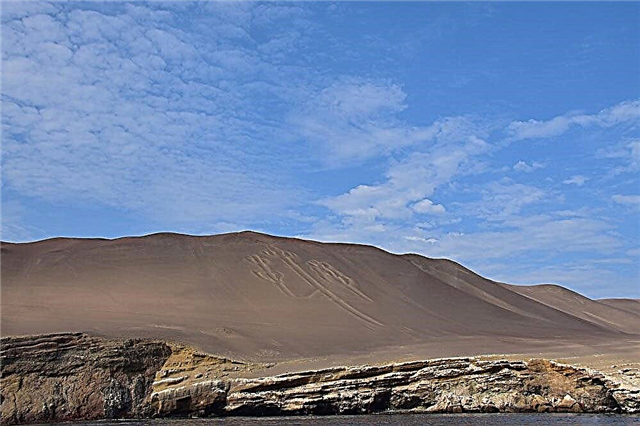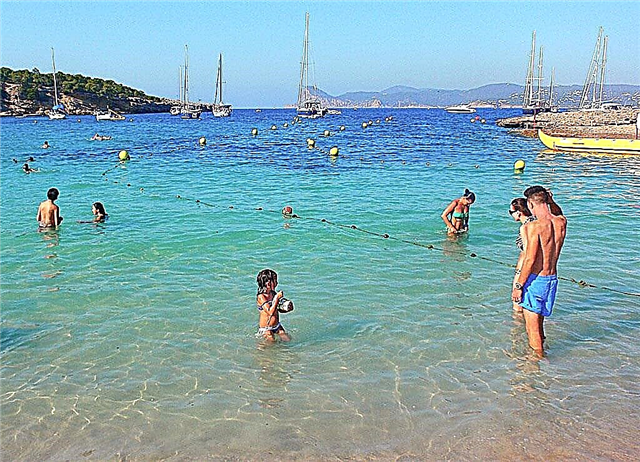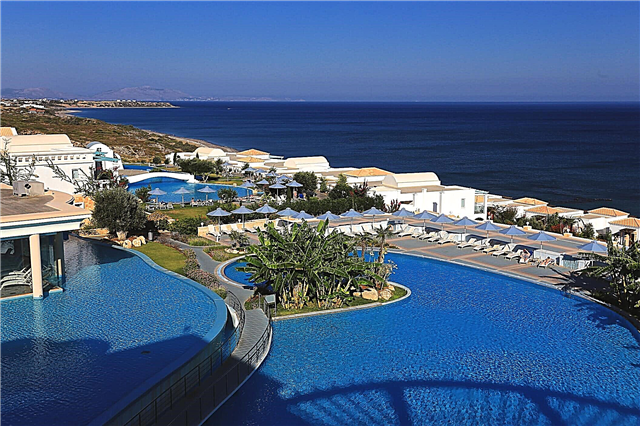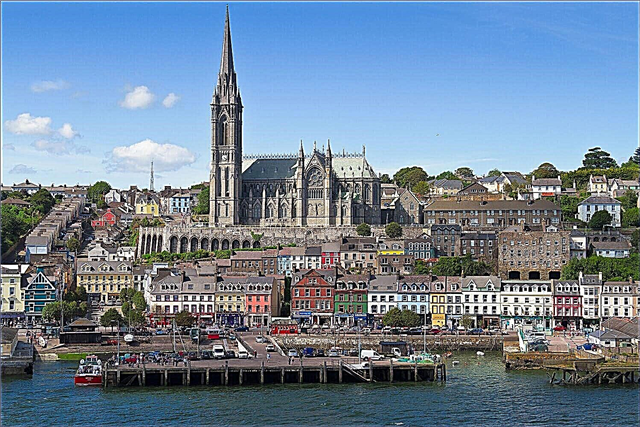Ireland's cities bear the imprint of the country's centuries-old history. Many of them have preserved the ruins of ancient castles built during the Norman conquest. Not far from the cities, you can see ancient megalithic structures and roadside Celtic crosses - a unique heritage of Ireland. Extensive nature reserves and parks have been created, fishing is developed on rivers and lakes.
Ireland's museums are open to visitors from around the world. There is a golf club and golf courses in almost every Irish city. Sailing is developed in coastal cities. Traditional Irish music festivals are held. The bars and cafes, many of which have a long history, serve Irish cuisine.
Largest cities in Ireland
List of the country's main cities in terms of population.
Dublin
Capital of Ireland. Dublin was founded in 841. One of the oldest monuments in the city is Dublin Castle. The Cathedral of St. Patrick's Day, Manson House - the residence of the Lord Mayors of Dublin, the customs building, etc. The landmark of the city is the halfpenny pedestrian bridge. The name is due to the fact that earlier the passage through it was paid. The Dublin Needle is a 120-meter-high monument, erected in 2003. The city has the Guinness Beer Museum, the National Leprechaun Museum, and the Irish Museum of Modern Art.
Population - 553 165 people (2016)

Cork
A city in the southwestern part of the country. The oldest building is the 14th century Red Abbey. The main boulevard of the city is St. Patrick. Of the museums in Cork, the most famous are the Crawford Art Gallery (Museum of Modern Art) and the Historical and Ethnographic City Museum. In the vicinity of the city, excursions are held at Blarney Castle, with its famous Stone of Speech. According to legend, the one who kisses the stone is given the ability to speak beautifully and fluently.
Population - 125 622 people (2016)

Galway
The city is recognized as the cultural capital of the country and hosts international festivals. Notable attractions include Kylemore Abbey, Lynch Castle, Ashford Castle, the Cathedral and others. Popular tourist destinations include the Latin Quarter, Quay Street, Salthill Promenade. Galway has the largest oceanarium in the country. Connemara National Park is not far from the city.
Population - 79 504 people (2016)

Limerick
County city in the west of the country. The famous sights include the Castle of King John, Cathedral of the Virgin Mary, Cathedral of John the Baptist, and other medieval buildings. The old customs building houses the Hunt Museum with a unique collection, which includes works by Leonardo da Vinci, Pablo Picasso. There are many restaurants serving traditional Irish cuisine in the city.
Population - 58 319 people (2016)

Waterford
It is the oldest city in Ireland, founded in 914. The main monument is the Reginald Tower, named after the founder of the city. It now houses the Waterford History Museum. The city's Museum of Treasures is well known, where unique archaeological finds are kept. The Kite Design Studio art center sells souvenirs and works of local artists. Every September, the city hosts the Harvest Festival.
Population - 48 369 people (2016)

Drogheda
A port city with a population of about 35 thousand people. The largest battle in the history of Ireland, the Battle of the Boyne, took place near Drogheda. Near the city are the ruins of Mellifon Abbey, founded in the XII century, and the national monument of Ireland - Newgray. This is a megalithic structure, a burial mound, which dates back to the III millennium BC. In the mythology of the Celts, it is called the Fairy Barrow - according to legend, in November, fairies leave there for just one night.
Population - 40 956 people (2016)

Dundalk
A city on the coast of the Irish Sea. It is home to about 35 thousand people. In Dundalk and its surroundings, many medieval buildings have survived - the church of St. Patrick and St. Brigitte, Dunmahon Castle, Franciscan Monastery, etc. Now it is an industrial city - it houses the enterprises of General Electric, Xerox, Heinz and other well-known companies. The city is home to the Dundalk County Museum.
Population - 39 004 people (2016)

An-Uav
City in County Meath, which has a population of 32 thousand people. The name comes from the Irish an Uaimh - "cave, grotto". The main attraction is the ancient Cistercian monastery and abbey. The film "Braveheart" was filmed in the ruins of the abbey buildings. Golf clubs and the traditional Irish bar "Smith" are open for tourists and residents of the city. Not far from the city is Tara Hill - the "Hill of the Kings" of Ireland.
Population - 28 399 people (2016)

Bray
The largest city in County Wicklow with a population of 36 thousand people. Bray is known for his film studio Ardmore Studios, which filmed the films "Brave", "Breakfast on Pluto" and others. The city hosts an annual jazz festival, film festival and St. The Arts Center, whose name translates as "The Little Mermaid", has been opened - you can hear live music and see film premieres there.
Population - 27 760 people (2016)

Carlow
The population is about 25 thousand people. Near the city is the Brownshill dolmen - a megalithic structure, the top stone of which weighs about a ton, and is considered the largest in Europe. It is recognized as a National Monument of Ireland. Another local attraction is the ruins of Carlow Castle on the Barrow River. The county museum is open in the city.
Population - 24,272 people (2016)

Balbriggan
The city is home to about 22 thousand. The name of the city comes from the local river Braken. Balbriggan's sights are the 14th century Bremor castle, the Martello tower, built during the Napoleonic wars, the church of St. George 1813, etc. Many establishments of traditional Irish cuisine are open. The city has been known as a center for weaving since the establishment of a hosiery factory in the 19th century.
Population - 21 722 people (2016)

Neis
The city's name comes from Nás na Ríogh - “meeting place for kings”. According to legend, the princes of ancient Ireland gathered on the site of the city. Later, parliamentary sessions were sometimes held in the city. According to the latest census, the population of the city is about 20 thousand. There are churches of the 19th century in Neisse. and older buildings. The National Hunting Festival is held near the city.
Population - 21 393 people (2016)

Tralee
The city is located in the southwest of Ireland. It is home to about 23 thousand tourists. Popular among tourists are the Kerry County Museum, the center of which is the city, and its theme park "Kerry: Kingdom". Tralee has a large Aquadom water park, the National Folk Theater of Ireland. The area is rich in natural reserves. The most famous of these are Ballisidy Wood, with an area of 32 hectares, and the Tralee Bay Nature Reserve.
Population - 20 869 people (2016)

Ennis
The population is almost 26 thousand. The name, translated from Irish, means "Island". The city is located on the Fergus River, which is considered a good fishing spot. Local attractions include the old mill, courthouse and military barracks on Kilrush Road. Ennis has a center for Irish culture and music, a city museum. Tourists often visit the local golf club with an 18-hole course. A traditional music festival is held.
Population - 20 475 people (2016)

Wexford
The Irish name of the city is Loch Garman. It is inhabited by about 20 thousand. The city was founded by Vikings in 800 years. In Wexford, an annual opera music festival is held, many music and theater venues are open - the National Opera House, the Dun Mhuire Theater, and the Art Center.Among the attractions are the famous "twin churches" - Bride Street and Row Street, as well as the Irish Church of St. Iberia.
Population - 20 188 people (2016)

Sligo
Population - about 20 thousand. The city was founded in 1245. Maurice Fitzgerald, Chief Justice of Ireland. It is now the center of industry and commerce for County Sligo. In the historical center of the city there are many buildings of the 19th century - the town hall, the courthouse and others. The Nyland Gallery, the Giluli Memorial Hall and the Model Gallery are open to tourists.
Population - 19 199 people (2016)

Ballinkollig
Population - about 18 thousand. This is the satellite city of Cork, located to the west of the central city. It is famous for its central park, which covers an area of 55 hectares. On the territory of the park are the buildings of the former Royal Powder Factory. Now they are open as a museum to visitors. At the cemetery of St. Oliver's is the grave of guitarist Rory Gallagher.
Population - 16 308 people (2006)

Letterkenny
City in County Donegal. Population - about 19 thousand. The name comes from Irl. Leitir Ceanainn - O'Cannon Slope. Received the nickname "Cathedral City" because it was the only Catholic cathedral in the county. This is the tallest building in the city, built in the 19th century. Letterkenny is home to the Donegal County Museum, a regional cultural center, and the county's largest cinema. There is a festival of Irish traditional music.
Population - 16 017 people (2016)

Athlone
Population - about 21 thousand inhabitants. The historical center of the city is the Atlona Castle (XII century). The Shannon River, which flows through the city, is a popular river cruise route. A yacht club was opened. On the west bank of the river is the oldest bar in Europe, the Sean Bar. Athlone hosts a literary festival and a theater arts festival every year.
Population - 15,686 people (2016)

Lakeslip
The city with a population of about 17 thousand. It is known as the place where the first A. Guinness brewery was opened in 1755. Nowadays, the city is home to the production of Intel and Hewlett Packard Enterprise. Architectural landmarks - Lakeslip Castle, Castletown House, St. Catherine. The annual Lakeslip Festival is held.
Population - 15 504 people (2016)

Greystones
A city on the shores of the Irish Sea and a seaside resort. Population - 14.5 thousand. The name is translated as "Gray stones" - from the rocky coastal zone. The city has a sports and recreation park, golf courses. Sailing, boating and fishing are well developed. Festivals and concerts are held.
Population - 14 569 people (2006)

Clonmel
Population - about 17 thousand. The name of the city comes from the Irish Cluain Meala - "honey meadow". Architectural monuments - the Church of the Virgin Mary, the building of the Kickham barracks, and the ruins of the city's defensive walls. Clonmel is home to the County Tipperary Museum, which is centered on the city, and the County Arts Center. The Memorial Theater (in the building of the former Methodist chapel) and the youth theater were opened. An annual arts festival is held.
Population - 14 257 people (2016)

Killarney
The population is about 15 thousand. The city has a developed industry, mainly textile. This is one of the main tourist centers of Ireland, therefore, a shopping and entertainment infrastructure has been created, focused on the city's guests. Of the sights, Ross Castle, St. Mary, Killarney House. Natural Monuments - Killarney National Park, local lakes and Black Valley.
Population - 14,017 people (2016)

Arklow
This is a town in County Wicklow. Population - about 12 thousand. The name, translated from Irish, means "big mouth". This refers to the mouth of the Avoca River, the largest in the area. The river is crossed by the Nineteen Arches Bridge - it is the longest stone bridge in Ireland. Every year the city hosts the Sea Breeze Arts Festival and Music Festival.
Population - 12 967 people (2016)

Tullamore
The county seat of Offaly County in the province of Leinster. It is home to about 13 thousand. The city is known as the birthplace of the Irish whiskey Tullamore Dew, the first distillery for the production of which was opened in 1829 The tourist center Tullamore Dew was opened. Of the sights in Tullamore, the most famous are Charleville Castle, the Darrow Celtic Cross Road and the unique parklands south of the city.
Population - 11 444 people (2016)

Castlebar
Population - 12 thousand. The name of the city comes from the Irish Caisleán an Bharraigh - "Barry Castle". It is a castle founded by the Norman conqueror de Barry in the 13th century. Later, barracks were built in its place, which are now a tourist attraction. The city is home to the Linenhall Art Center and Theater Royal. The Art Center hosts an annual children's art festival.
Population - 11 087 people (2016)

Mullingar
A town in County Watsmith. Population - about 20 thousand. The main attractions are Lough Owel, Lough Derrawrag and Lough Annell. It is a favorite fishing spot for locals and tourists alike. Mullingara City Park offers relaxation for the whole family. Mullingar is a commercial and industrial city. The main industry is the production of pewter (tin alloy) and products from it.
Population - 9 986 people (2016)

Kilkenny
Its population is only 22 thousand people together with the suburbs. Kilkenny is known for its famous red beer brand, named after the city. City attractions - Kells Priory, St. Kanisa, Town Hall and other old buildings. Known are Kilkenny College (founded in 1538), where Jonathan Swift studied, and the Cartoon Saloon studio, whose cartoons were nominated for an Oscar.
Population - 9 807 people (2016)

Drihad Nua
Small town in Ireland with a population of about 19 thousand. The name in Irish means "New Bridge". The English name is Newbridge. Not far from the city are the ruins of the Augustinian abbey. Kerrag Racecourse, Golf Courses, Liffey Park and Gables Leisure Center are open to the public.
Population - 7 682 people (2016)

Port Liish
One of the small towns of Ireland, it is home to about 21 thousand people (together with the suburbs). It is the administrative center of the county of Liish in the province of Leinster. Not far from the city is the Emo Court Mansion Museum. The county is also home to Ballamore Castle, one of the oldest buildings in Ireland.
Population - 3 951 people (2016)


